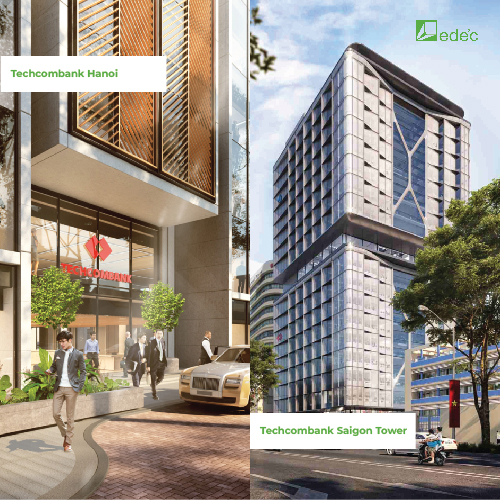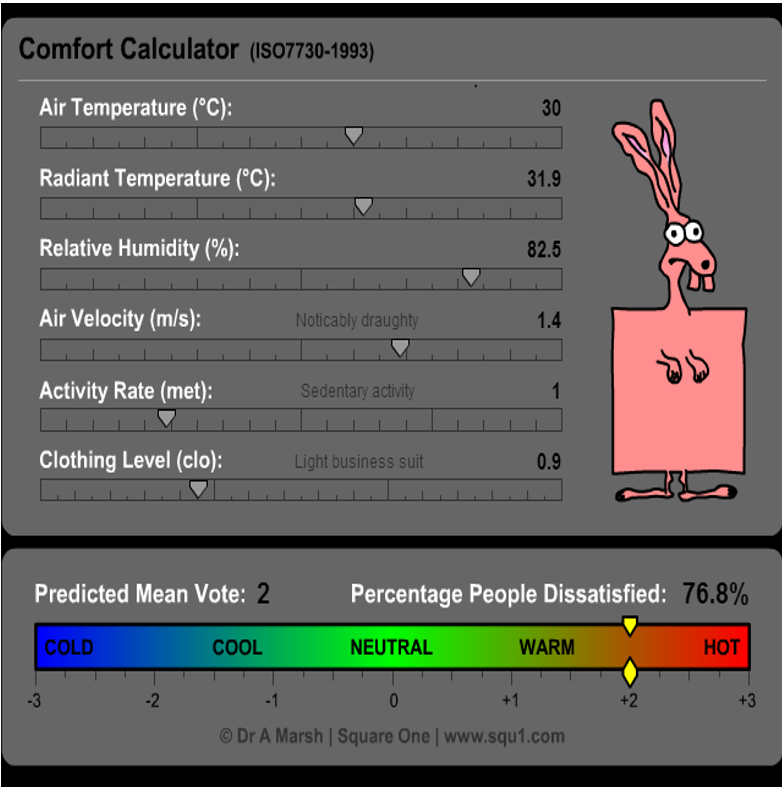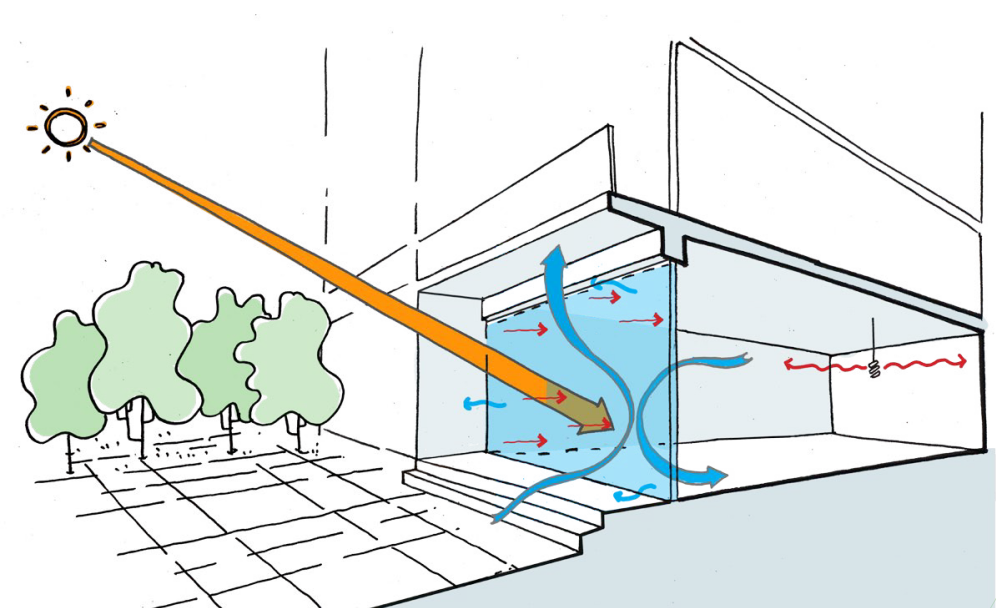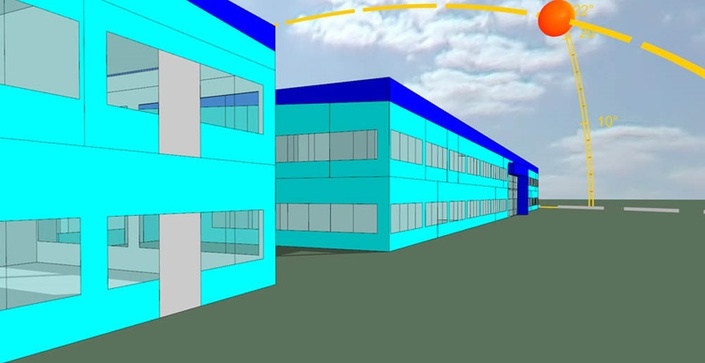RESOURCES
Green buildings have not “taken off”: Need unlatching on green financial leverage

Compared with other countries in the region and the world, the number of construction projects granted green building certification in Vietnam is still small. This situation is due to many barriers, including those related to green finance.
A series of barriers to green building development
Green buildings in Vietnam have been started to develop since about 2000, but so far only over 200 projects have been granted official green building certificates, some of which are in the stage of registration for green building certification.
The construction of buildings and urban in the direction of green, smart, energy-saving, environment-friendly, and emission-reducing becomes a common trend in countries around the world and Vietnam as green buildings bring efficiency in terms of energy, environment, and economy. However, compared with other countries in the region and the world, the number of projects with green building certification is still small.
At the webinar on the topic: “Green building – Green finance in real estate project development” held recently, experts explained the barriers to green building development in Vietnam and offered views on removing those barriers.
Sharing at the seminar, Mr. Trinh Tung Bach – Founder of GBS Vietnam said that the green building market in Vietnam is not developing as expected because of many barriers.
The first is the challenge of project investment. From an investor’s perspective, doing green work must increase costs. However, in Vietnam, few studies are showing how much the costs increase or there is no support mechanism for enterprises to develop green buildings. Along with that, the process of implementing projects is still the old one, so it is still costly in terms of cost and time. In addition, the participation of stakeholders such as energy-saving, architecture, etc. is still lacking and weak.
“Mostly when being assigned topics related to green buildings, consultants only offer technical solutions, while costs are often ignored because very few units can undertake the detailed calculations and give valid results. There is no specific priority mechanism on the market, and at the same time, the certification process is still complicated. There are many projects with green elements but they do not register for green certification because the process is too cumbersome and expensive”, Mr. Bach said.

Mr. Trinh Tung Bach – Founder of GBS Vietnam shared his opinions at the conference.
Secondly, buyers are challenged to understand clearly what green buildings are as well as the benefits of green buildings. Businesses are still advertising the appearance of green buildings, but have not told buyers about the great benefits of operation, comfort, and health of the building, so buyers do not fully understand them.
Thirdly, market barriers. Many projects are labeled green but not green, which makes home buyers misunderstand where a real green project is different from a regular project.
Mr. Bach also added: “Investors are often interested in whether green buildings can meet three issues of legal, financial, and business. Specifically, in terms of legislation, do businesses have any priority? In terms of finance, what are the sources of capital and forms of mobilization? In terms of business, does having a green building optimize selling costs?”.
According to Mr. Bach, for each project with a green certificate, the product is more valuable than the ordinary construction. It also promotes the sales process and increases the reputation of the investor as well as fulfills the social mission of sustainable development.
Regarding the cost of green buildings, according to Mr. Bach, there are many misconceptions about the high cost of green buildings, there are misconceptions that increase from 12-29%, but in fact, there are green buildings that are not necessarily expensive, and expensive buildings are not necessarily green.
“In some projects that we have done, the cost would only increase by 1-3 percent and the cost depends on the green toolkit applied to each project,” said Mr. Bach.
Capital and finance story for green real estate
In Vietnam, when it comes to energy-saving buildings, the first thing investors think of is how much the cost will increase. But the reality is not so, we are affected by the dose calculation and carelessness in the market, so the cost of the technical system is “exaggerated” a lot. However, using the predictive model of building operation properly, reduces not only energy consumption but also operating costs each year.
Mr. Tran Thanh Vu – Chairman of the International Building Performance Simulation Association – Vietnam affiliate shared that, the sad thing here is that this forecasting model has not yet appeared in Vietnam, so not all investors understand clearly this point.
“The need for green buildings is real and businesses also want their projects to get green certificates not only because of the corporate brand issue but also because they want the residents of their project to live in a green, healthy, and safe environment.”, Mr. Vu said.
According to Mr. Vu, the classification of energy-saving buildings is the key basis to “open the door” to incentives in tax, loan interest, high floors, construction density, construction licensing procedures, etc.

Experts shared ideas at the conference.
According to Mr. Hoang Anh Dung – Energy expert of responsAibility investment AG and GCPF fund, green real estate is an extremely potential investment trend in the future. There is a lot of capital poured into green real estate, but there are still many shortcomings, so there are very few related projects on the market.
Explaining this, he said that the main reason is that there is no official connection between the State and the investor: The State has never had any incentive policy for investors to see their benefits. In addition, the real estate product line is also on the list of restrictions by the State Bank. The last reason is that very few investors give specific directions on the issue of building products that are sure to reach customers.
According to Mr. Dung, financial leverage stimulates the development of scientific and technological products, investment in projects that use energy efficiently, reduce CO2 emissions, reduce dependence on renewable energy, and reduce negative impacts on the environment and society at the same time.
“There should be more incentive policies from the Government and ministries for green real estate projects as well as specific development mechanisms and processes. Investors need to have a development strategy such as if it is an office building, energy-saving is important, and for housing, comfort, comfort, and temperature will be what customers care about. From there, different green standards shall be applied to reduce development costs, “said Mr. Dung.
The expert also added that, in Vietnam, attracting capital into green real estate through foreign investment funds is very limited because real estate in general is a rather risky product. Besides, some investors have successfully issued green bonds. However, these are businesses with good risk management, a very good commitment to the community, along with a clear direction and strategy in development as well as an understanding of the requirements of the international organization.
Ms. Nguyen Bich Ngoc – CEO & Founder of Sen Vang Real Estate Services Joint Stock Company also added: “Issuing green bonds is an issue that big groups and investors need to pay attention to. Because it is not only a story of attracting capital to develop but also affirming the business brand. The foreign funds they require are high, so they are only suitable for large corporations. Besides, other businesses come to the funds to seek advice, through which they will have an orientation to attract capital in the future.”
“Green building is an inevitable development trend in the post-Covid-19 context. When doing the green building, it is necessary to have a more multi-dimensional perspective and green finance should be developed as a key to promoting green building development”, Mr. Bach also added.






